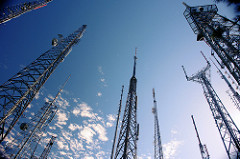Towards a spatial imperative in public urban development geovisual analysis and communication
Keywords:
Urban development, Geovisualization, GIScience, VisualizationAbstract
Despite advances in GIScience and geovisualization, public consultation for urban development often lack analytical depth or visualization methods that deliver transparent communication and democratic access. Typical methods for engaging the public include the use of architectural designs, artists’ renderings, engineering drawings, and physical models (Gill, Lange, Morgan, & Romano, 2013). These methods of urban development communication do little to accommodate portions of the population that are not design-oriented (Al-Kodmany, 1999). This thesis seeks to bridge the gap between GIScience, geovisualization, and urban development through the development of an evaluation framework for existing urban development visualizations. Next, it evaluates visualizations produced for a new development in the District of North Vancouver named “The Residences at Lynn Valley.” Following this evaluation, it proposes a set of visibility analyses that aim to reveal the intangible visual impact of future developments. This research provides the basis for future evaluative and analytical work in GIS and geovisualization for urban development.




